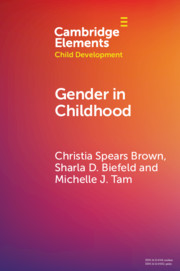Gender in Childhood Goes Beyond Pink or Blue
When people think about gender in children, the focus is often around differences between girls and boys. But most modern research on gender development highlights how this focus overlooks two important themes: boys and girls, at the group level, are much more similar to one another than they are different, and there is so much variation within gender groups that those comparisons are flawed to begin with.
First, based on large scale meta-analyses across domains of cognitive abilities, communication, personality and social variables, psychological well-being, and motor behaviors, the research is very clear that gender differences are usually either very small or non-existent. Indeed, 78% of all the effect sizes examined in meta-analyses indicated either no or very small differences between boys and girls (Hyde, 2005). Are there reliable differences between boys and girls? There are, but typically only in the domains of motor performance (such as throwing distance and velocity), some measures of sexuality (such as frequency of masturbation), and physical aggression. This is consistent with what neuroscience shows, which confirms that women’s and men’s brains are not sexually dimorphic (either female or male); instead, women’s and men’s brain structures are actually more similar to each other than they are different (Joel et al., 2015). There is no such thing as a binary, prototypical female or prototypical male brain.
Not only does a focus on gender differences between boys and girls search for differences that rarely appear, that approach also ignores the diversity within gender groups. For example, there is variation among children who are identified as male or female at birth, in that they may identify as a cisgender boy or girl, a transgender boy or girl, non-binary, gender nonconforming, gender expansive, genderqueer, or gender diverse. When teens were asked “Do you consider yourself transgender, genderqueer, genderfluid, or unsure about your gender identity?,” about 3% of 9th and 11th graders selected a non-binary option (Rider, et al., 2016). There is also biological variability within cisgender girls and boys; for example, girls with congenital adrenal hyperplasia (CAH) have hormone exposure more similar to males in utero than females. Thus, comparing “boys” to “girls” ignores all of the children who don’t neatly fit into a rigid binary.
There is also enormous diversity across cultures, both in terms of how girls and boys are treated, and at times, in how gender is even defined. For example, in many parts of the world, parents exhibit strong preferences for sons over daughters, often reflecting the sons’ roles as future financial providers for the family. In other parts of the world (such as Sweden), national preschool curricula have been specifically designed to counteract traditional gender stereotypes, gender roles, and gender patterns. And yet, in some regions around the world, there are also cultural differences in the basic conceptions of gender and accepted gender identities (such as a non-binary category of individuals, called hijras, in India; and fa’afafine in Independent Samoa).
Taken together, research consistently shows that gender is extremely diverse, multi-faceted, and culturally dependent. As parents, policymakers, and researchers think about how children develop within their gender, we need to ensure that our conceptions of gender reflect this rich complexity.







